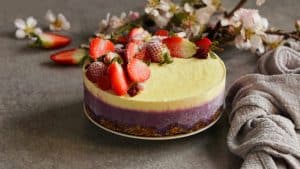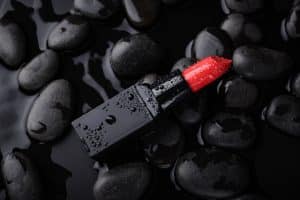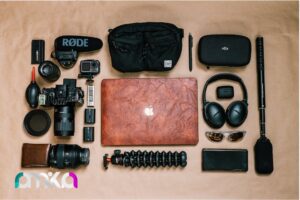6 different types of product photography (comprehensive guide)

Category:Photography / videography
Publish Date: 2023-11-21 21:57:57
Product photography is an intricate art form that brilliantly marries the realms of creativity, technical finesse, and the strategic world of marketing. At its core, it is the craft of capturing the very essence of a product, transforming the tangible into the visually captivating. With a careful orchestration of various photography styles and techniques and knowing types of product photography, product photography wields the power to profoundly influence how a product is perceived by its prospective audience.
This comprehensive guide will be your portal into the enchanting world of product photography types, providing a profound exploration of the diverse dimensions of this discipline. We will navigate through the myriad types of product photography, dissect the essential equipment and techniques, and unravel the ever-evolving trends that shape this captivating realm. Whether you are a budding photographer seeking to refine your skills, an e-commerce entrepreneur striving for impeccable product presentation, or merely an inquisitive soul intrigued by the artistry behind a perfect product image, this article of different types of product photography is designed to cater to your curiosity and quench your thirst for knowledge.
Explore our professional and specialized photography services at Photography in Vancouver for more information, should you be interested.





The Basics of Product Photography
Before we embark on our journey to unravel the diverse genres of types of product photography, it is crucial to establish a solid foundation in the fundamental principles that underpin this mesmerizing craft. These principles serve as the bedrock upon which the entire art of product photography is constructed, defining the line between an ordinary image and a captivating visual story. Proper Lighting: Lighting in product photography is nothing short of magical brushstrokes on the canvas. The right lighting has the power to accentuate textures, play with shadows, and draw attention to the product’s key features. Understanding the interplay of natural and artificial light sources and the art of sculpting shadows is pivotal. Composition: The art of arranging elements within the frame is what sets a compelling product image apart from a cluttered, uninspiring one. Compositional techniques like the rule of thirds, leading lines, and the golden ratio can be harnessed to create visually harmonious and balanced images. Attention to Detail: In product photography types, the smallest details matter immensely. Imperfections that the human eye might overlook can be magnified in a photograph. The use of props, styling, and careful consideration of every element in the frame is essential to ensure the product is presented flawlessly. Mastering these core principles allows you to craft images that not only capture the essence of a product but also transmit a compelling narrative to the viewer. With this solid foundation, you’ll be well-prepared to explore the captivating world of types of product photography. Suggested content: different types of portrait photography
Different Types of Product Photography
The world of product photography is as diverse as the products it captures, offering various styles tailored to different purposes and audiences. Let’s explore some of the most prominent types of product photography, each with its distinct characteristics and intentions:Commercial Product Photography
Commercial product photography is the epitome of product presentation artistry. It first one of types of product photography aims to unveil products in the most enticing and marketable manner possible, often featuring high-end products such as luxury fashion items, cosmetics, or exquisite jewelry. In this type of product photography, no detail is too minor, and no imperfection goes unnoticed. Photos are meticulously staged and undergo extensive retouching to achieve a state of photographic perfection. The emphasis is on showcasing the product’s unparalleled quality, craftsmanship, and exclusivity. Through impeccable lighting, styling, and post-processing, commercial product photography transforms the product into an aspirational work of art, leaving a lasting impression on the discerning viewer.E-commerce Product Photography
Second one of product photography types, E-commerce product photography, is the workhorse of online retail. Its primary focus is on practicality and efficiency. This style of photography is the go-to choice for online stores, e-commerce marketplaces, and product catalogs. In the fast-paced digital world, e-commerce product photos are engineered for the convenience of the customer. They typically feature a clean, consistent background, allowing the product to be the unequivocal focal point. Multiple angles and close-up shots are commonly employed, enabling potential buyers to scrutinize the product from every angle. By presenting products in this clear and straightforward manner, e-commerce product photography plays a pivotal role in aiding customers’ informed purchase decisions. Probably this article will be useful for you: logo design step by stepLifestyle Product Photography
Lifestyle product photography has a captivating narrative quality. It goes beyond merely showcasing a product; it seeks to create an emotional connection with the audience by depicting products in real-life settings and scenarios. This one of types of product photography breathes life into the inanimate, portraying how products seamlessly integrate into a consumer’s daily existence. Items like clothing, accessories, and home goods are often the stars of this style. Lifestyle product photography tells a story, painting a vivid picture of how a product can enhance and enrich one’s life. Through carefully curated scenes and models, it offers viewers a glimpse into the aspirational and relatable aspects of owning the featured product. It’s an artful approach that invites consumers to imagine themselves as part of the lifestyle portrayed, forging a personal connection between the product and the potential buyer.
White Background Product Photography
White background product photography, often referred to as catalog or packshot photography, is a time-tested classic, especially favored by e-commerce platforms and product catalogs. The concept is simple, yet its impact is profound. Products are artfully placed against a pristine, unadorned white background, creating an environment that emphasizes the product’s clarity and minimizes distractions. This approach ensures a clean, professional, and consistent appearance for the products. The absence of clutter or distractions directs the viewer’s full attention to the product itself, making it an excellent choice for businesses that prioritize product visibility, clarity, and brand uniformity.Macro Product Photography
Macro product photography is all about getting up close and personal with your subject. It involves capturing extreme close-up shots that unveil the most intricate details of a product. This one of types of product photography is a masterful choice when the goal is to showcase textures, fine craftsmanship, or specific features that might otherwise go unnoticed. Jewelry, watches, electronics, and any item with fine details are ideal candidates for macro photography. By magnifying the subject, this style draws viewers into a world where they can appreciate the subtle nuances and craftsmanship that make the product exceptional. The result is an image that not only informs but also evokes a sense of awe and appreciation for the product’s artistry. [elementor-template id=”19601″]360-Degree Product Photography
360-degree product photography is a cutting-edge, immersive experience that invites customers to interact with a product from every angle. This technique of types of product photography involves capturing a series of images from multiple perspectives and then seamlessly stitching them together to create an interactive, rotatable view of the product. As customers explore the product online, they can rotate it, zoom in, and thoroughly inspect it from all sides. This level of interactivity fosters a sense of confidence and connection that is otherwise challenging to achieve in the digital shopping realm. It allows customers to bridge the gap between in-store and online shopping, making informed decisions with a comprehensive view of the product. This approach has become a powerful tool for e-commerce businesses looking to enhance the shopping experience and reduce return rates. We suggest you also read this article: What is videography?
Equipment and Techniques
To excel in the field of product photography and product photography types, a combination of the right tools and well-honed techniques is essential. Here’s a deeper dive into what you’ll need to create stunning product images in various types of product photography:- High-Quality Cameras: A DSLR or mirrorless camera with manual settings is a must for product photography. These cameras allow you to have full control over settings like aperture, shutter speed, and ISO, giving you the flexibility to capture the product precisely as you envision it.
- Various Lenses: Different lenses serve different purposes. A macro lens is perfect for extreme close-ups, while a prime lens can create beautiful bokeh (background blur). A standard zoom lens offers versatility for capturing various types of products.
- Lighting Equipment: Lighting is the heart of photography. A combination of softboxes, diffusers, reflectors, and continuous lighting or strobes allows you to shape and control light, illuminating the product just right.
- Backdrops: A variety of backdrops, such as white, black, or colored seamless paper and textured materials, provide a clean and uncluttered environment for your product.
- Techniques: Understanding advanced techniques can take your skills in every product photography types to the next level. Focus stacking, for example, combines multiple images taken at different focus points to achieve a greater depth of field. Light painting is a method where you illuminate specific areas of the product to control highlights and shadows effectively. Reflectors can bounce light onto the subject, filling in shadows and enhancing the overall lighting.
DIY Product Photography Tips
For those operating on a budget, the prospect of professional skill in every product photography types might seem daunting. However, with the right knowledge and a touch of creativity, you can create impressive product images without breaking the bank. Here are some cost-effective tips to consider:- Natural Lighting: Take advantage of natural light by shooting near a window. Soft, diffused sunlight can beautifully illuminate your products without the need for expensive studio lighting.
- DIY Lightbox: Craft your lightbox using materials like white foam boards and translucent fabrics. This DIY solution can provide even lighting and help eliminate harsh shadows.
- Basic Editing Tools: Utilize free or low-cost photo editing software like GIMP, Canva, or Adobe Lightroom to make essential adjustments, such as exposure, color correction, and cropping.
- Tripod: A stable tripod is invaluable in product photography. It ensures your camera remains still, reducing the risk of blurry images.

Common Mistakes to Avoid
Achieving professional product images is not without its pitfalls. Understanding and avoiding common mistakes can set you on the path to success as a pro in every types of product photography:- Improper Lighting: Inadequate or incorrect lighting can lead to underexposed or overexposed images. Understanding how to manipulate light to emphasize your product is vital.
- Inconsistent Backgrounds: A consistent background is crucial for creating a cohesive product portfolio. Mismatched backgrounds can distract from the product itself.
- Neglecting Post-Processing: Post-processing, including color correction and retouching, is the final polish that can transform good images into outstanding ones. Neglecting this step can leave images looking unprofessional.
Benefits of Professional Product Photography
Investing in professional types of product photography is an invaluable step in the journey of a successful business. The advantages of professional photography extend far beyond mere aesthetics. High-quality images have the power to convert casual browsers into loyal customers. When potential buyers see products presented in a visually pleasing and informative manner, they are more likely to make a purchase. Also Professional product photography conveys a sense of trust and authenticity. It reassures customers that they are dealing with a legitimate, reliable business that takes its products seriously. Your product images are an extension of your brand’s identity. They reflect your commitment to quality and professionalism. Professional photographers like Ramikar have the expertise to align your brand image with the visual representation of your products. In a world where the first impression often takes place in the digital realm, professional product photography can be the key to standing out, gaining trust, and driving sales.
Trends in Product Photography
Product photography is a realm in constant evolution, adapting to the ever-changing demands of the market. Staying current with the latest trends in this field can offer a competitive edge. Here are some contemporary trends shaping types of product photography:- Environmentally Friendly Practices: Consumers today are increasingly eco-conscious. Product photography is following suit with the use of sustainable materials, recycling, and green production practices. This not only appeals to environmentally aware consumers but also positions brands as responsible and forward-thinking.
- Minimalist Aesthetics: Minimalism is thriving in product photography. Clean, uncluttered images with a focus on essential details create a sense of sophistication and clarity.
- 3D Modeling and Augmented Reality: The integration of 3D modeling and augmented reality offers an interactive and immersive shopping experience. Customers can visualize products in their real environment before making a purchase, increasing confidence in their choices.
Final thoughts
Product photography is a dynamic and indispensable facet of modern commerce. Regardless of whether you’re in the realm of e-commerce, retail, or luxury brands, the type of product photography you select can make or break your success. Your ability to present products in a way that resonates with your target audience is paramount. By understanding the diverse styles and product photography types, acquiring the right equipment, mastering essential techniques, and staying attuned to current trends, you can create visuals that captivate and convert. Professional product photography and different types of product photography can be the linchpin that elevates your brand above the competition and boosts your sales figures. For those who seek the pinnacle of product photography, consider reaching out to Ramikar’s photography and videography services. Their expertise can help you unlock the full potential of your product presentation, ensuring that your products are showcased in the best possible light, driving your business to new heights of success. [elementor-template id=”19628″]FAQs
What is the significance of product photography for e-commerce businesses? Product photography is crucial for e-commerce businesses as it directly influences conversion rates, customer trust, and brand image. High-quality images help customers make informed purchase decisions. How can I improve my DIY product photography? To enhance your DIY product photography, focus on mastering lighting, understanding composition, and using basic editing tools. Natural light and a clean background can go a long way in achieving professional results. What are the current trends in product photography? Current trends include eco-friendly practices, minimalism, and the integration of 3D modeling and augmented reality. These trends aim to engage and captivate modern consumers. Why should I choose professional product photography services like Ramikar’s? Professional product photographers have the expertise, equipment, and techniques to create exceptional images that showcase your products in the best light. This can lead to increased sales and a stronger brand presence.Recent Articles:

Video Marketing Canada: Best Strategies for 2025
7 months ago
5 min 25 sec read

Photography Services Canada: For Web & Social Media Use
7 months ago
5 min 2 sec read

Logo Design Canada: Create a Logo That Truly Stands Out
7 months ago
4 min 38 sec read
Let us help !
Related Posts
Comments
0
0
votes
Article Rating
Subscribe
Login
0 Comments
Oldest
Newest
Most Voted
Inline Feedbacks
View all comments






